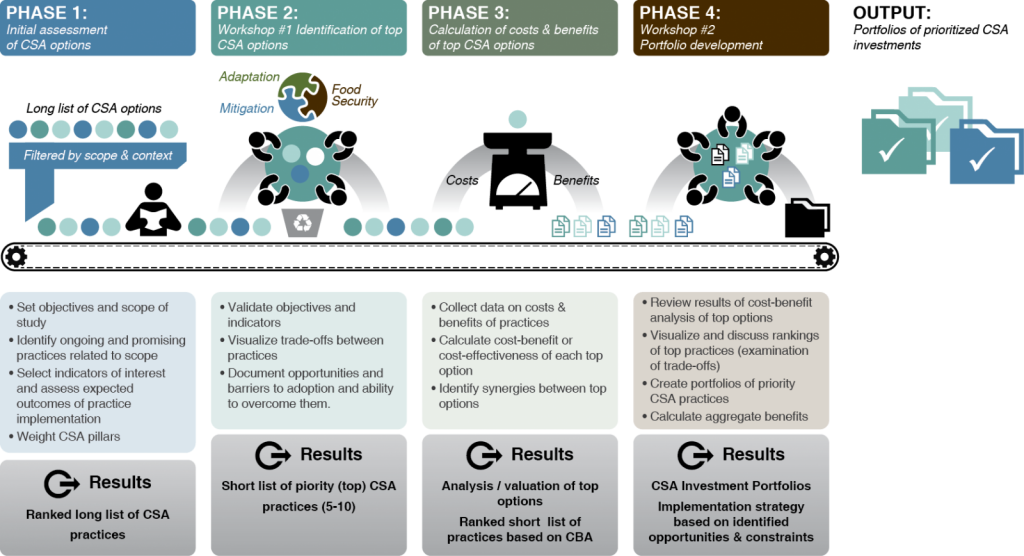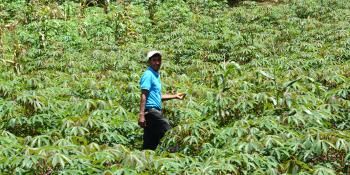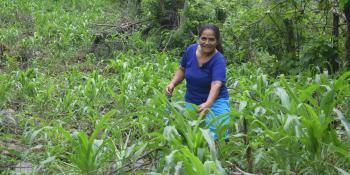Making smart decisions for a food-secure future
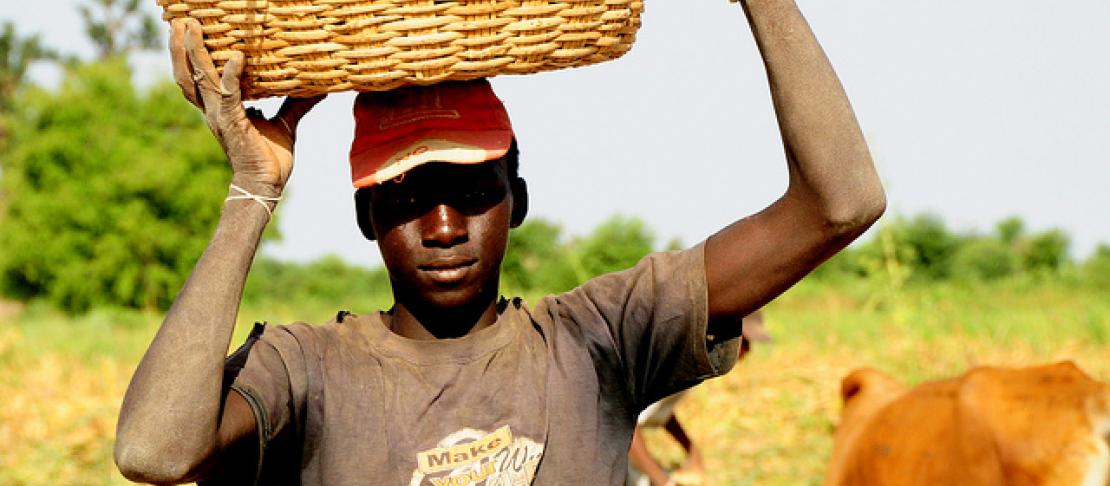
The Climate-Smart Agriculture Investment Prioritization Framework aims to guide stakeholders in optimizing national and sub-national agricultural planning.
It is clear that climate change is increasingly threatening our food systems. Many farmers are already adopting different sustainable agriculture practices, such as conservation agriculture techniques (minimum or no-till, mulching, crop rotations), more climate-resistant crop varieties, and silvopastoral systems, among others. One could say that we are on the right track. Yet, many times such ‘climate-smart’ efforts remain undocumented or lack continuity in implementation, making it a challenge to take then to scale.
Lack of information and funding constraints are often at the root of these challenges. Data limitations on outcomes of implementing practices and costs and benefits can make it hard to prioritize practices to invest in. And at worst, these can result in inadequate channeling of agricultural funds. Decision makers, be they farmers, policy-makers or donors, are left with the conundrum of finding the best ways to address trade-offs between the desire to boost yields, adapt agriculture to climate, social, and economic changes, and lower the emissions contributions.
These challenges given, the International Center for Tropical Agriculture (CIAT) and the CGIAR Research Program on Climate Change, Agriculture and Food Security (CCAFS) have created a Climate-Smart Agriculture Prioritization Framework (CSA-PF) that facilitates the identification of Climate-smart agriculture (CSA) investment portfolios. The process is stakeholder-driven, bringing together actors across multiple levels to discussion options for achieving gains in productivity, adaptation, and mitigation and the tradeoffs.
Who can use the framework and for what purpose?
The CSA-PF aims to guide stakeholders in optimizing national and sub-national agricultural planning, by providing methods for:
- identifying agricultural production systems and (vulnerable) regions key for food security in the country/region,
- identifying existing and promising CSA practices in relation to key production systems
- evaluating the context-specific outcomes of these practices
- analyzing the costs and benefits of implementation, as well as opportunities and barriers to adoption, and
- identifying existing policies and strategies that support the implementation and/or scale out of CSA practices on the field (e.g. insurance and crediting schemes, early warning systems, etc.).

Edwin Rojas from the Ministry of Agriculture, Livestock, and Food in Guatemala, discussing challenges of decision-making in agriculture and climate change at the CCAFS COP20 Side Event in Lima, 1-2 December 2014. Photo: G. Betancourt
Once developed, portfolios of CSA practices can be used for channeling agricultural investment funds in the face of climate change. The CSA-PF was designed to be flexible and adaptable to the needs of various stakeholder groups including national governments, NGOs, regional decision-making bodies, development organizations, donors, community-based organizations, and others.
Current partners have been drawn to the framework to:
- evaluate current state of CSA and figure out where to go from here
- better integrate climate change into agriculture planning, beyond disaster risk reduction
- assess existing funding channels to agriculture
- seek new investment opportunities
- evaluate existing policies that incentivize CSA
- identify entry points and opportunity to scaling out CSA
How does it work?
The CSA-PF uses a four phase approach to guide stakeholders through the process of filtering a long list of applicable CSA practices into portfolios of priority practices. The phases are additive, with each refining the previous outputs. The process generally takes between 4-8 months, but can be simplified and still provide valuable inputs into investment decision-making.
Figure 1 Overview of the CSA Prioritization Framework. (Click to enlarge)
The process begins with Phase 1 where technical national experts and portfolio users (national governments, NGOs, donors, etc.) identify the scope of the CSA investment in terms of geographic area, challenges to address, and goals to achieve. A list of practices linked with the scope is created and assessed based on indicators of desired outcomes. The framework includes a list of suggested indicators for evaluating practices linked with the CSA goals (productivity, adaptation and mitigation), such as yield, increased income, water use, emissions intensity, etc. Stakeholder select a subset of indicators to focus the evaluations of the practices.
In Phase 2 stakeholders are gathered to validate objectives and select top practices from the long list of options developed in Phase 1. The indicator analysis provides the base of discussions on tradeoffs between the achievement of the three goals of CSA, stakeholder desired outcomes and barriers to adoption.
In Phase 3 cost-benefit analyses are conducted on each of the practices in the short-list (prioritized in Phase 2). The goal is to identify investment opportunities associated with various productive systems. Analyses are based on scientific literature, expert knowledge, and primary data as needed.
Phase 4 reunites stakeholders in a participatory workshop to select CSA practices for inclusion in investment portfolios. Tradeoffs between the ranking of practices associated with the CSA goals, desired outcomes, and economic feasibility are visualized and discussed. Aggregate benefits from different portfolios along with synergies between practices are explored, and perceived constraints and barriers to adoption, along with ways to overcome them, are included in analyses of portfolios.
This is one recommended flow for the prioritization process, but additional steps and activities can complement or replace existing ones, in order to make sure the framework suits the needs of users. Tools and processes such as crop modelling, participatory scenario development, and frameworks for evaluating sustainable land management can be integrated with this approach. Likewise, where the main users are community-level and indigenous groups, bottom-up processes (additional community-level dialogues, participatory surveys, etc.) are essential in order to ensure representations and equity principles.
Where is the CSA-PF being used?
The framework is currently being used by national government actors in Guatemala and by a national stakeholder platform in Mali. Five pilots are planned for 2015 in Africa and Asia, in collaboration with the Africa CSA Alliance, USAID, and various country partners, and with a community-level organization in Colombia.
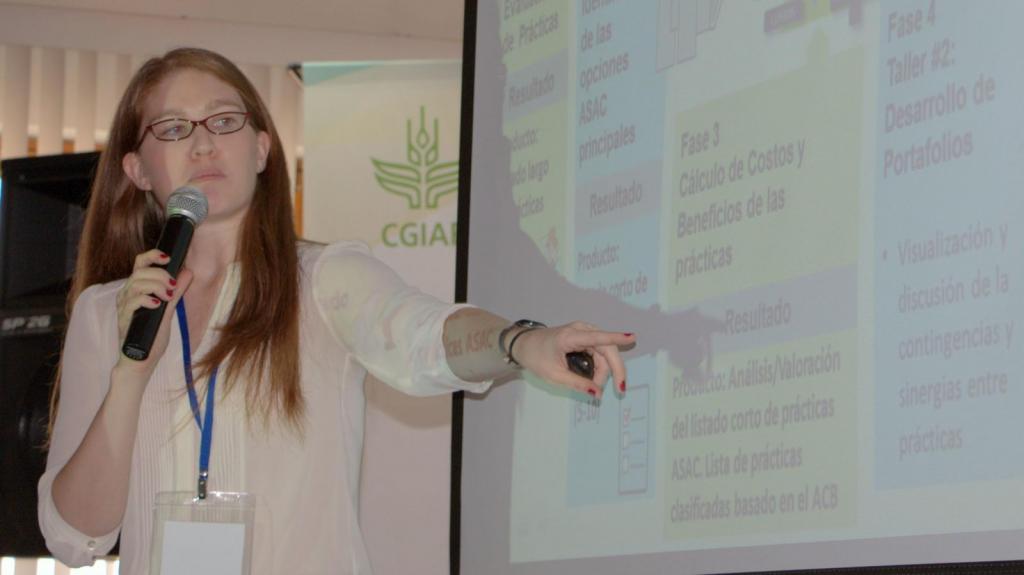
Caitlin Corner-Dolloff (CIAT) presenting the CSA Prioritization Framework at the CCAFS COP20 Side Event in Lima, 1-2 Dec 2014. Photo: G. Betancourt
The CSA-PF was presented during the COP20 side event Approaches and Tools for Agriculture and Climate Change Planning organized by CCAFS Latin America and held in Lima between 1 and 2 of December 2014. See the presentations below.
Spanish: Marco de priorización de intervenciones en Agricultura Sostenible Adaptada al Clima (ASAC)
English: Climate-smart agriculture investment prioritization framework
If you want to learn more about the work on the Prioritization Framework undertaken by our team in CIAT, please feel free to contact us:
- Caitlin Corner-Dolloff, c.corner-dolloff@cgiar.org - for details on framework development and scaling out efforts in Asia and Africa
- Miguel Lizarazo, m.lizarazo@cgiar.org - for details on work in Latin America
- Concept Note on the Prioritization framework (EN, ESP)
- Our experience with the Prioritization Framework in Guatemala (Presented at COP20 on Lima) (ESP)
- You can also visit our page on the CSA Country Profiles project

